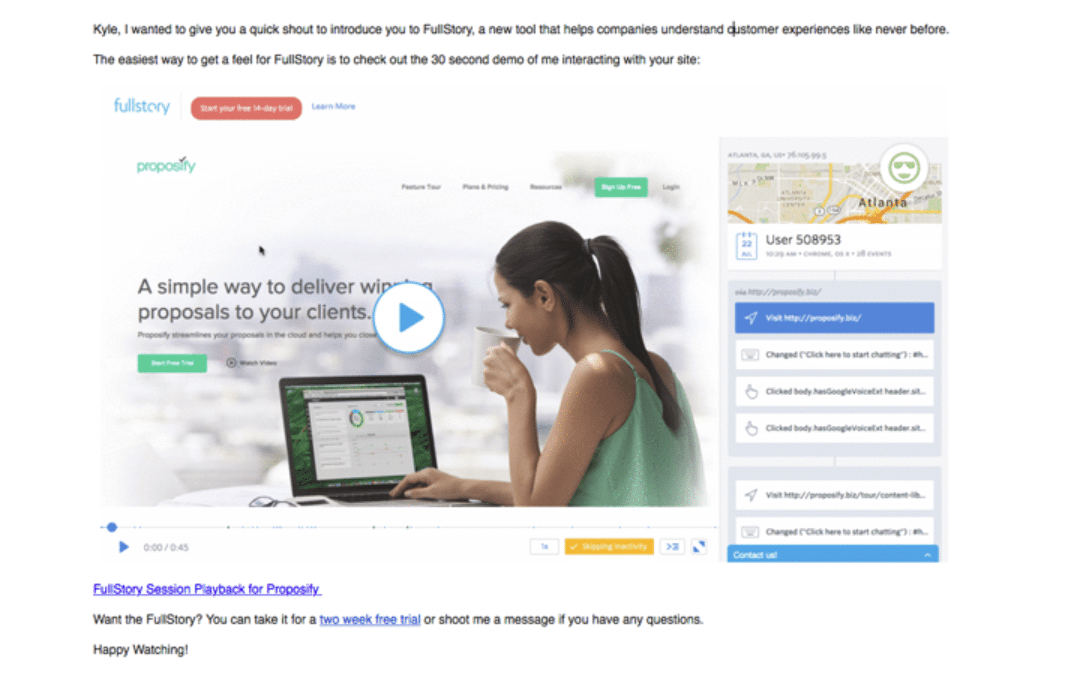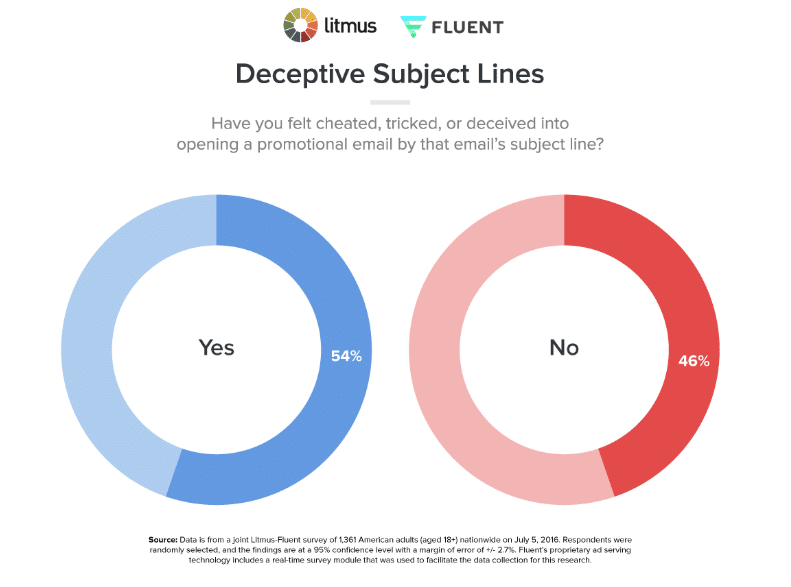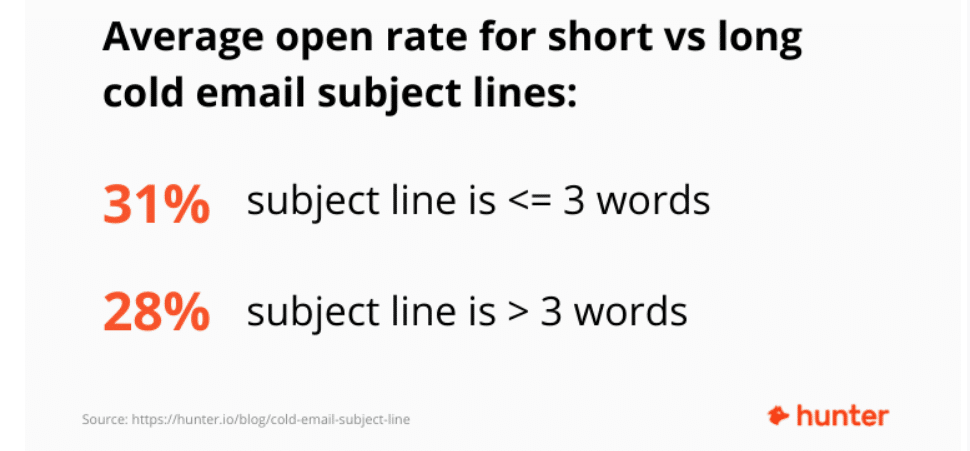Email is still one of the most popular ways PR experts contact people at scale. The popularity of email, its ease of use, and the abundance of email tools out there makes email a go-to communication method for lead generation and other PR campaigns.
But if you’ve used email for your PR campaigns you know getting positive responses from people is hard. Some people argue that cold emailing is a numbers game. The more emails you send, the more responses you’ll get. The common response rate for cold emails is below 3 percent. This 3 percent includes the negative responses as well. So let’s stay positive and say the positive response rate for a typical cold email campaign is 2 percent.
What’s causing that pitiable number? A few mistakes people make when sending email pitches.
Mistake #1: Contacting the wrong person
A traditional method for sending email pitches was scraping email addresses from a random source (or paying for them) and then sending them a general message. In many cases, these email addresses were from people that had nothing to do with your pitch. Not to mention that many of these emails were outdated or fake so you were simply sending an email to nobody.
PR practitioners still make this mistake. They send an email pitch to a fake email address or they contact the people not interested in their pitch.
There are some ways to avoid this:
-
Before sending any emails, think about your ideal contact
Imagine the qualifications or the roles they should have. Should they be influencers in a particular niche? What kind of audience should have influence on? Should they be editors, bloggers, managers, executives, etc.? You can take the extra step and define a typical journey map to make sure you don’t miss their behavioral features as well. Having a clear understanding of who you should reach out to makes your outreaching targeted.
-
Reach out to the right decision-maker
If you have a list of websites or blogs in mind to be featured on, don’t simply send you pitch to any email address you could find on their website. Chances are they are receiving lots of similar emails everyday through their general email addresses. Your email might be unnoticed. Some websites have dedicated emails for PR matters but in general their public email is for sales issues or customer support. Instead find the person in charge of their website’s content and reach out to them.One way to do so is checking out the pages dedicated to introducing their team or reviewing their company’s LinkedIn page. Sometimes you can find content managers, editors, or PR managers in the byline sections of their blog as well.
Richard Carufel’s byline as the editor of Bulldog Reporter. Not everybody is as nice as him to publicise his email address.
-
Verify email addresses
Finding a decision maker’s email address is not that easy sometimes. They’re not disclosing it easily for the fear of spammers finding a way to their inbox. When you send PR emails it becomes equally important for you to land your email in the primary tab or else your efforts get wasted.
If you couldn’t find a person’s email address by Googling their names, or searching through their website, LinkedIn or other social media accounts, you can do some guesswork. Typically company email addresses have one of these formats:
- first@company.com
- first.last@company.com
- firstlast@company.com
- firstinitiallastname@company.com
- firstlastinitial@company.com
You need to test whether the email address you came up with is valid. A good place to start is holding your cursor on the email address you just typed in the “New message” window. If there’s an image showing up, it means that email is associated with a Google profile and is valid.
Another way to verify an email address is using email verifying tools. Mailtest, Hunter’s email verifying tool, and Zerobounce, are some of the tools you can use.
If guesswork didn’t help you out, you can use some premium tools to find email addresses.
Mistake #2: Failing to personalize
After you find out the ideal person to reach out to, it’s time to prepare the actual email. But before you do that, you need to know that PR cold emailing has passed the age of reckless mass targeting. Sending the same general email to hundreds of people won’t cut it anymore. People are interested in messages tailored for them. Failing to personalize your emails is the next email pitch mistake you could be making.
How to personalize your emails? As a rule of thumb, you need to do your homework and get to know the person you’re reaching out to. I suggest you research the following:
- The person you’re sending the email to: Visit their personal website, sign up for their newsletter (and tell them about it in your email), read their content, see if they were mentioned in the news, research their position and tenure at the company, and find out who they’ve worked with and the challenges they face.
- The company’s recent news: See if the company has had a recent achievement, reputable client, an article featured in a major publication, or a new feature released. Make sure none of the challenges or wins they experience go unnoticed.
Business intelligence tools could help you a lot in gathering the information you need. Here are some ways to use this information to design your emails:
-
Send a tailored message
Congratulate them on their recent achievements. Consume their content and see what they’re obsessed with. You can always grab people’s attention by mentioning what they’re obsessed with. The introduction I use for my bulk emails is typically “[company name] is an amazing company. Great blog too — congrats!”. I mention their blog because I’m promoting an SEO tool that could increase their blog traffic. Good cold email outreach tools can help you a lot in sending tailored messages in bulk using templates and other features.
-
Show them you’re not a stranger
Mention a person you both know. Being referred to your recipient by someone they know and trust could be a good way of showing you’re actually a friend rather than a stranger. If you have the opportunity, ask the person you both know for an introduction. If not, you can use this line: “Jacob and I have been long-time friends. We’ve been collaborating on [a recent project]. I thought our work might be interesting for you as well . . .”
-
Highlight any commonalities
People bond better when they feel they share a common ground. See if you can find anything common between you and the recipient. Here’s an example: “As a fellow entrepreneur I understand the difficulties concerning [your area of expertise]. In fact, I struggled with it so much I built my own platform for solving the issue. . . “
A good example of a personalized email is the one FullStory sent to Kyle Racki, the CEO of Proposify:
Subject: Magic Goggles
Kyle, I wanted to give you a quick shout to introduce you to FullStory, a new tool that helps companies understand customer experiences like never before. The easiest way to get a feel for FullStory is to check out the 30-second demo of me interacting with your site:
FullStory session playback for Proposify
Want the FullStory? You can take it for a two-week free trial or shoot me a message if you have any questions. Happy Watching!”
This is basically one of the shortest cold emails I’ve seen. It’s successful (you know it because Kyle Racki wrote a whole blog post on it) because it’s super relevant and personalized: it’s got a recorded session of what FullStory can do for the recipient’s own website Proposify. You can, obviously, guess how surprised Kyle was to see his own website and logo in a sales email. Using videos in your emails is a good way to increase engagement.
Mistake #3: Tricking into clicking
What’s a business owner’s worst nightmare? Losing people’s trust. No one buys from a fraudulent business. Along the same lines, the deadliest cold emailing mistake anyone could ever make is being dishonest and tricking people into clicking.
Click-bait subject lines are the most common way to do this. If you’re wondering what makes a subject line clickbait, here are some cases:
- Deceptive about who the email is from: “Did I leave my jacket at your place?” seems to be from a friend, but it’s not.
- Deceptive about previous email exchanges: The blatant “Re:” type. “[last chance] Re: your offer”, “Re: Join . . . in London on October 19th – save your spot now!” are two examples.
- Deceptive about the urgency of a message: “Urgent — Update your information.” You click on it just to find it’s a promotional email.
- Deceptive about action taken by the subscriber: “Your Reservation Confirmation,” “About your order,” “Thanks for your order!”
Sending these emails to your contact might get them to open your emails but eventually they feel cheated. A Litmus study found that more than half the US adults they surveyed have felt “cheated, tricked, or deceived into opening a promotional email by that email’s subject line.”
What makes a good subject line? Here are some suggestions.
-
Describe what’s in it
Kudos to clever subject lines but if you can’t come up with any, just describe what’s in the email. “A new post for your blog” is my top performing subject line for content pitches. Salesy words such as “consultation”, “solution”, etc. don’t perform well in email subject lines according to Codeless.
-
Keep it short
Hunter’s guide on subject lines mentions the results of a study they did on subject line length. They found that subject lines with three or less words in them have a higher chance of being opened. Keep your subject lines as short as you can.
-
Mention a person you both know
This goes a long way. Use “I know you through [name]” in your subject line and increase the chances of getting your email opened. Your current customers are ideal for referring you to the people they know.
-
Mention their recent news
Any specific problems they’re facing at the moment? Any recent achievements? Any projects they’re working on? Using this information in your subject line could increase the chances of being seen and opened. “A few words on your [project/article/achievement, etc.]”, and “Here’s how [name of their business] could generate more leads” are a couple of examples.
In conclusion
Most people see cold emailing as a numbers game. From their perspective, you need to reach out to as many people as you can and push your message any possible way. The 2 percent response rate is just the logical outcome of this mindset. To make cold email pitches work for your PR campaigns, you need to contact the right people, personalize your pitch, and be trustworthy. Even after your email pitch turns out to be a success, your job is not finished. Post outreach optimization is an area you can’t afford to miss. Check out what you should do to boost the results of your PR email campaigns in the post outreach phase.












